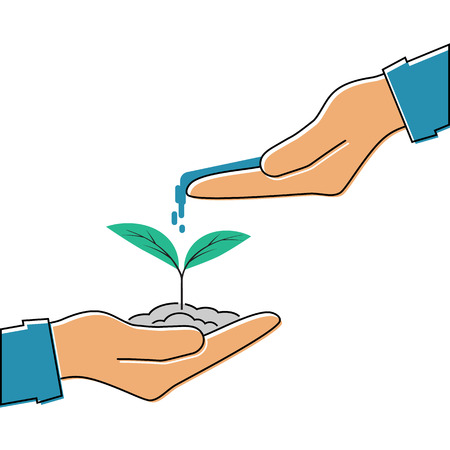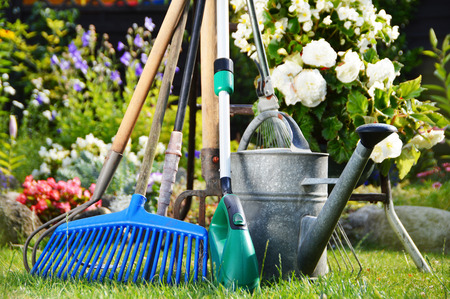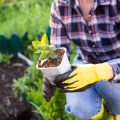1. Understanding the Principles of Zero-Waste Gardening
Zero-waste gardening is all about creating a sustainable, eco-friendly backyard space where nothing goes to waste. It’s a lifestyle choice that aligns perfectly with growing environmental awareness across the United States, especially among homeowners who want to make a difference right in their own yards.
What Is Zero-Waste Gardening?
At its core, zero-waste gardening means using every resource—soil, water, organic matter—in a way that avoids trash and minimizes environmental impact. Instead of throwing things away or relying on synthetic products, you reuse, recycle, and compost everything you can.
Key Concepts of Zero-Waste Gardening
| Concept | Description | How It Applies to Your Backyard |
|---|---|---|
| Sustainability | Using natural resources responsibly to ensure long-term health for your garden and environment. | Grow native plants, reduce chemical use, and conserve water with rain barrels. |
| Resource Maximization | Getting the most out of what you already have without buying new materials. | Repurpose kitchen scraps into compost; reuse containers as planters. |
| Circular Systems | Creating loops where waste becomes input instead of ending up in landfills. | Compost food scraps and yard waste to feed soil; collect seeds from existing plants. |
Why Its Gaining Popularity in American Backyards
With more Americans embracing eco-conscious living, zero-waste gardening has become a practical way to reduce household waste while enjoying fresh produce and beautiful landscapes. Many communities now offer composting programs, garden tool libraries, and local seed exchanges—all supporting this low-impact approach. Plus, it’s budget-friendly and family-friendly—kids love learning how nature recycles!
A Few Simple Ways to Get Started
- Start composting food scraps and lawn clippings.
- Use fallen leaves as mulch instead of bagging them up.
- Create DIY planters from old buckets or crates.
- Collect rainwater for irrigation.
By understanding these basic principles, youre setting the foundation for a thriving zero-waste garden that supports both your home and the planet.
2. Planning Your Backyard Layout with Waste Reduction in Mind
Designing a zero-waste garden starts with a smart, thoughtful layout. When you plan your backyard space to reduce waste from the beginning, it becomes easier to manage resources, grow healthy plants, and minimize trash or excess materials. Here’s how you can create an efficient garden layout that supports sustainability and productivity.
Use Multi-Purpose Zones
Divide your garden into zones that serve more than one purpose. For example, a compost zone near your vegetable beds makes it easy to return food scraps and garden clippings back to the soil. A seating area shaded by fruit trees offers relaxation while also producing food.
| Zone | Main Function | Secondary Benefit |
|---|---|---|
| Vegetable Beds | Food Production | Compost Destination |
| Compost Area | Waste Recycling | Soil Enrichment |
| Fruit Tree Border | Food Production | Natural Shade & Windbreak |
| Herb Spiral or Raised Bed | Culinary Herbs | Pest Control & Pollinator Attraction |
Crop Rotation for Soil Health and Less Waste
Certain crops take more nutrients from the soil than others. By rotating crops each season, you reduce the need for synthetic fertilizers and keep soil balanced naturally. This technique also helps prevent pests and diseases, so there’s less need for chemical treatments.
Simple 4-Year Crop Rotation Plan:
| Year | Bed 1 | Bed 2 | Bed 3 | Bed 4 |
|---|---|---|---|---|
| Year 1 | Leafy Greens (Lettuce, Kale) | Root Crops (Carrots, Beets) | Fruiting Crops (Tomatoes, Peppers) | Legumes (Beans, Peas) |
| Year 2 | Root Crops | Fruiting Crops | Legumes | Leafy Greens |
| Year 3 | Fruiting Crops | Legumes | Leafy Greens | Root Crops |
| Year 4 | Legumes | Leafy Greens | Root Crops | Fruiting Crops |
Add Companion Planting to Save Space and Reduce Inputs
This method involves planting certain crops together to boost growth and reduce pests naturally. It’s a great way to cut down on chemical sprays and make better use of limited space.
| Main Crop | Companion Plants | Main Benefit |
|---|---|---|
| TOMATOES | Basil, Marigold, Carrot | Pest control & flavor enhancement |
| CORN | Pole Beans, Squash (Three Sisters) | Nutrient support & weed suppression |
| CABBAGE FAMILY (e.g., Broccoli) | Dill, Nasturtium, Onion family plants | Pest deterrent & pollinator attraction |
| CUCUMBERS | Nasturtium, Radish, Sunflower | Pest control & climbing support (sunflowers) |
| LETTUCE | Carrot , Radish , Chives | Space efficiency & pest reduction |
Think Vertical to Maximize Small Spaces
Vertical gardening helps reduce waste by using materials like old pallets or trellises made from reclaimed wood or metal. It also allows you to grow more in less ground space—perfect for small backyards. Consider vertical structures for peas, beans, cucumbers, strawberries, or herbs.
Design for Easy Access and Maintenance
A well-planned layout reduces wasted time and energy. Keep paths wide enough for a wheelbarrow or cart (about 2–3 feet). Use mulch between rows to suppress weeds and retain moisture, reducing water waste. Group plants with similar water needs together to avoid overwatering or underwatering.
Quick Tips:
- Create U-shaped beds around a central compost bin for easy access.
- Avoid long hoses by placing rain barrels near each zone.
- Add signage made from repurposed materials to label plant types and care instructions.
- Keeps tools nearby in weather-proof containers made from recycled buckets or crates.
- Slope pathways slightly for natural water drainage into garden beds.
Your backyard garden doesn’t have to be big—it just has to be smartly designed with sustainability in mind. Starting with a thoughtful layout helps set the foundation for a thriving zero-waste gardening lifestyle.

3. Essential Tools and Materials for a Zero-Waste Garden
Starting a zero-waste garden in your backyard doesn’t mean you need to spend a fortune on fancy equipment. In fact, many of the tools and materials you’ll need can be upcycled, repurposed, or found locally. Here’s a breakdown of essential items that will help you maintain an eco-friendly garden while reducing waste.
Composting Essentials
Composting is at the heart of zero-waste gardening. It turns kitchen scraps and yard waste into rich, nutrient-dense soil.
| Tool/Material | Description | Where to Find (U.S.) |
|---|---|---|
| Compost Bin | A container to hold organic waste as it breaks down. Choose from plastic, wood, or DIY versions using pallets. | Home Depot, Lowe’s, local garden centers, or build your own |
| Kitchen Compost Pail | Small bin with a lid for collecting food scraps indoors before transferring outside. | Amazon, Target, Bed Bath & Beyond |
| Compost Thermometer (optional) | Helps monitor internal temperature to ensure proper decomposition. | Gardening supply stores or online retailers |
Water Conservation Tools
Sustainable gardens make smart use of water. These tools help reduce runoff and conserve resources.
| Tool/Material | Description | Where to Find (U.S.) |
|---|---|---|
| Rain Barrel | Catches rainwater from gutters for irrigation use. Look for models with spigots and overflow protection. | Lowe’s, Home Depot, local municipalities often offer discounts or rebates |
| Soaker Hoses / Drip Irrigation Kits | Delivers water directly to plant roots with minimal evaporation. | Gardening stores or online kits like DripWorks or Rain Bird systems |
Eco-Friendly Gardening Tools
You don’t need gas-powered equipment to grow a healthy garden. Choose manual tools that last longer and have less environmental impact.
- Trowel & Hand Fork: Great for planting, digging, and weeding. Opt for stainless steel with wooden handles for durability.
- Pruners: Use bypass pruners for clean cuts on stems and branches up to 1-inch thick.
- Garden Gloves: Choose natural rubber or bamboo fiber gloves instead of synthetic ones.
- Wheelbarrow or Garden Cart: For moving compost, mulch, and soil without single-use bags.
Upcycled and Sustainable Containers
You don’t have to buy new pots—repurpose what you already have! Upcycling reduces waste and adds personality to your garden space.
| Item to Upcycle | Use in the Garden | Sustainability Tip |
|---|---|---|
| Mason Jars or Cans | Herb planters or seed starters on windowsills or patios. | Punch drainage holes at the bottom to prevent root rot. |
| Pallets or Crates | Create vertical gardens or raised beds. | Avoid chemically treated wood; look for “HT” (heat-treated) stamped pallets. |
| Buckets & Totes (Food-Grade) | Larger container gardening options for tomatoes, peppers, etc. | Ask local bakeries or restaurants for used food-safe containers. |
| Burlap Sacks & Canvas Bags | Grow potatoes or root vegetables in soft-sided containers. | Bags allow airflow and can be reused multiple seasons if stored dry. |
Sourcing Locally and Sustainably in the U.S.
If youre looking to keep your garden as low-impact as possible, shop at local farmers markets, secondhand stores like Habitat ReStores, or community garden swaps. You can also check online marketplaces like Craigslist or Facebook Marketplace for free or discounted tools and materials in your area. Choosing American-made products when available supports local economies and reduces transportation emissions too!
Quick Tip:
If youre just starting out and want to avoid buying plastic pots, ask nearby nurseries if they have extras—they often give them away!
The right tools not only make gardening easier but also align with your zero-waste goals by promoting reuse, reducing consumption, and supporting sustainability from the ground up.
4. Composting and Soil Regeneration Techniques
Creating a zero-waste garden starts with making the most of what you already have—especially your kitchen and yard scraps. Composting is an easy, natural way to recycle organic waste into rich soil that helps your plants thrive without the need for synthetic fertilizers.
What Is Composting?
Composting is the process of breaking down organic materials like fruit peels, coffee grounds, grass clippings, and dry leaves into a nutrient-rich substance called compost. This compost can then be mixed into your garden beds to feed the soil and promote healthy plant growth.
How to Start Composting at Home
You don’t need fancy equipment to start composting. Here’s what you’ll need:
Basic Composting Tools
| Tool | Purpose |
|---|---|
| Compost Bin or Pile | Holds your compost materials in one place |
| Pitchfork or Garden Fork | Helps turn and aerate the pile |
| Kitchener Scraps Container | Collects food waste before adding to the bin |
What You Can Compost
| Browns (Carbon-rich) | Greens (Nitrogen-rich) |
|---|---|
| Dried leaves, cardboard, paper towels | Fruit & veggie scraps, coffee grounds, grass clippings |
A good rule of thumb is to aim for a mix of about 2-3 parts browns to 1 part greens. Keep your pile moist like a wrung-out sponge and turn it every couple of weeks to keep air flowing and speed up decomposition.
Natural Soil Regeneration Techniques
Cultivating Healthy Soil Without Chemicals
The goal of zero-waste gardening isn’t just reducing trash—it’s also building healthier soil naturally. Here are some simple techniques:
- Add Finished Compost: Mix compost into garden beds twice a year—in early spring and fall—to enrich the soil with nutrients.
- Use Mulch: Spread wood chips, straw, or shredded leaves around plants to retain moisture, suppress weeds, and slowly feed the soil as it breaks down.
- Grow Cover Crops: In off-seasons, plant legumes like clover or peas to prevent erosion and fix nitrogen into the soil.
- Avoid Tilling: No-till gardening keeps soil structure intact and preserves beneficial microbes and worms.
Turning Organic Waste Into Garden Gold
Instead of sending banana peels or eggshells to the landfill, put them to work in your backyard. Reusing these materials not only reduces your household waste but also gives your garden a powerful boost—naturally. With time and care, you’ll build dark, crumbly compost that smells earthy and helps everything from tomatoes to herbs grow better.
Quick Tip:
If youre short on space or live in an apartment, try vermicomposting with worms or use a countertop compost bin with odor control features. Many cities also offer community compost drop-off sites!
The key to successful zero-waste gardening is learning how nature works—and letting it do the heavy lifting for you. By turning organic waste into healthy soil, you’re closing the loop right in your own backyard.
5. Creative Reuse and Recycling in the Garden
One of the most rewarding parts of starting a zero-waste garden is finding clever ways to reuse what you already have. With a little creativity, everyday household items and yard waste can be transformed into useful tools and materials for your garden—helping you reduce landfill waste and save money.
Repurpose Common Household Items
You don’t need to spend a fortune on gardening supplies. Many things you already own can be repurposed into useful garden tools or containers. Here are a few ideas:
| Household Item | Garden Use |
|---|---|
| Plastic milk jugs | Cut into scoopers, mini greenhouses, or watering cans |
| Toilet paper rolls | Use as biodegradable seed starters |
| Old spoons and forks | Turn into plant markers or small digging tools |
| Mason jars or glass containers | Create mini herb gardens or store seeds |
| Egg cartons | Perfect for starting seedlings indoors |
Salvage and Upcycle Materials
Look around your home, garage, or neighborhood for items that can be salvaged and put to good use. Local “Buy Nothing” groups or yard sales are also great places to find reusable materials. Here are some examples:
- Use old wooden pallets to build raised beds or compost bins.
- Turn broken terra cotta pots into decorative mulch or drainage filler for large planters.
- Reclaim bricks or stones from old construction projects to make garden paths or edging.
Recycle Garden Waste Effectively
A truly zero-waste garden makes full use of its own organic waste. Instead of bagging up grass clippings, leaves, or pruned branches, try these methods:
- Compost vegetable scraps, coffee grounds, eggshells, and yard trimmings to create nutrient-rich soil for your plants.
- Create leaf mold by letting raked leaves break down in a separate pile—it’s great for improving soil texture.
- Chop and drop: leave trimmed plant material around your plants as natural mulch to retain moisture and suppress weeds.
Quick Tip:
If you’re not sure where to start with composting, begin with a simple bin made from an old trash can. Drill holes for airflow, toss in your food scraps and yard waste, mix occasionally—and nature will do the rest!
6. Maintaining and Scaling Your Zero-Waste Garden Sustainably
Once your zero-waste garden is up and running, the next step is to keep it thriving while staying eco-friendly. This part of your journey is all about consistent care, smart seasonal planning, sharing with others, and expanding in a way that continues to minimize waste.
Long-Term Maintenance Tips
Maintaining a healthy garden doesn’t have to be complicated. Here are some simple, sustainable ways to keep your garden in top shape year-round:
- Compost Regularly: Keep feeding your compost pile with kitchen scraps and yard waste. Turn it every few weeks for aeration.
- Rotate Crops: Plant different crops in different areas each season to improve soil health and reduce pests naturally.
- Mulch Naturally: Use dried leaves, grass clippings, or straw as mulch to retain moisture and suppress weeds.
- Use Rainwater: Collect rainwater in barrels and use it for irrigation to conserve tap water.
Seasonal Adjustments
Your garden needs change with the seasons. Here’s a quick guide to help you plan ahead:
| Season | What to Do | Zero-Waste Tip |
|---|---|---|
| Spring | Start seeds indoors, prep soil with compost | Reuse egg cartons as seed starters |
| Summer | Harvest produce, water early morning or late evening | Create homemade natural pest sprays from garlic or chili |
| Fall | Plant cover crops, collect fallen leaves for composting | Avoid plastic bags—use a reusable tarp or bin for leaf collection |
| Winter | Protect beds with mulch or row covers, maintain tools | Sharpen and oil tools instead of buying new ones |
Community Sharing and Swapping
A great way to reduce waste and build community is by sharing resources. Here’s how you can get involved:
- Seed Swaps: Organize or join local seed exchange events to diversify your crops without buying new seeds.
- Tool Libraries: Borrow gardening tools from a community tool library instead of purchasing new ones.
- Share Harvests: Trade excess veggies or herbs with neighbors or donate them to local food banks.
- Create a Compost Co-Op: Team up with neighbors who don’t have space for composting but want to contribute scraps.
Sustainable Garden Expansion Ideas
If youre ready to grow your garden, do it mindfully. Heres how:
Add Vertical Gardening Structures
This saves space and materials. Use repurposed wooden pallets or old ladders to grow climbing plants like peas and beans.
Create a Pollinator Zone
Add native flowers that attract bees and butterflies. Not only does this support biodiversity, but it also boosts your crop yield naturally.
Grow What You Eat Most Often
This minimizes food waste and ensures nothing goes unused in your harvest. Focus on staples like lettuce, tomatoes, herbs, or peppers that match your daily diet.
Sustainable Scaling Checklist
| Sustainable Action | Description |
|---|---|
| Add Rain Barrels | Cuts down on water usage by collecting natural rainfall for irrigation |
| Create More Compost Bins | Keeps up with increased organic waste as your garden grows |
| Diversify Crops Naturally | Mimics nature’s variety, reducing pests without chemicals |
| Upcycle Materials for Beds & Paths | Avoid buying new—use reclaimed wood, bricks, or stones when expanding layout |
Sustainable gardening is an ongoing journey. With a little planning and some community spirit, your backyard garden can become not just a source of fresh produce—but a model of zero-waste living right where you live.


